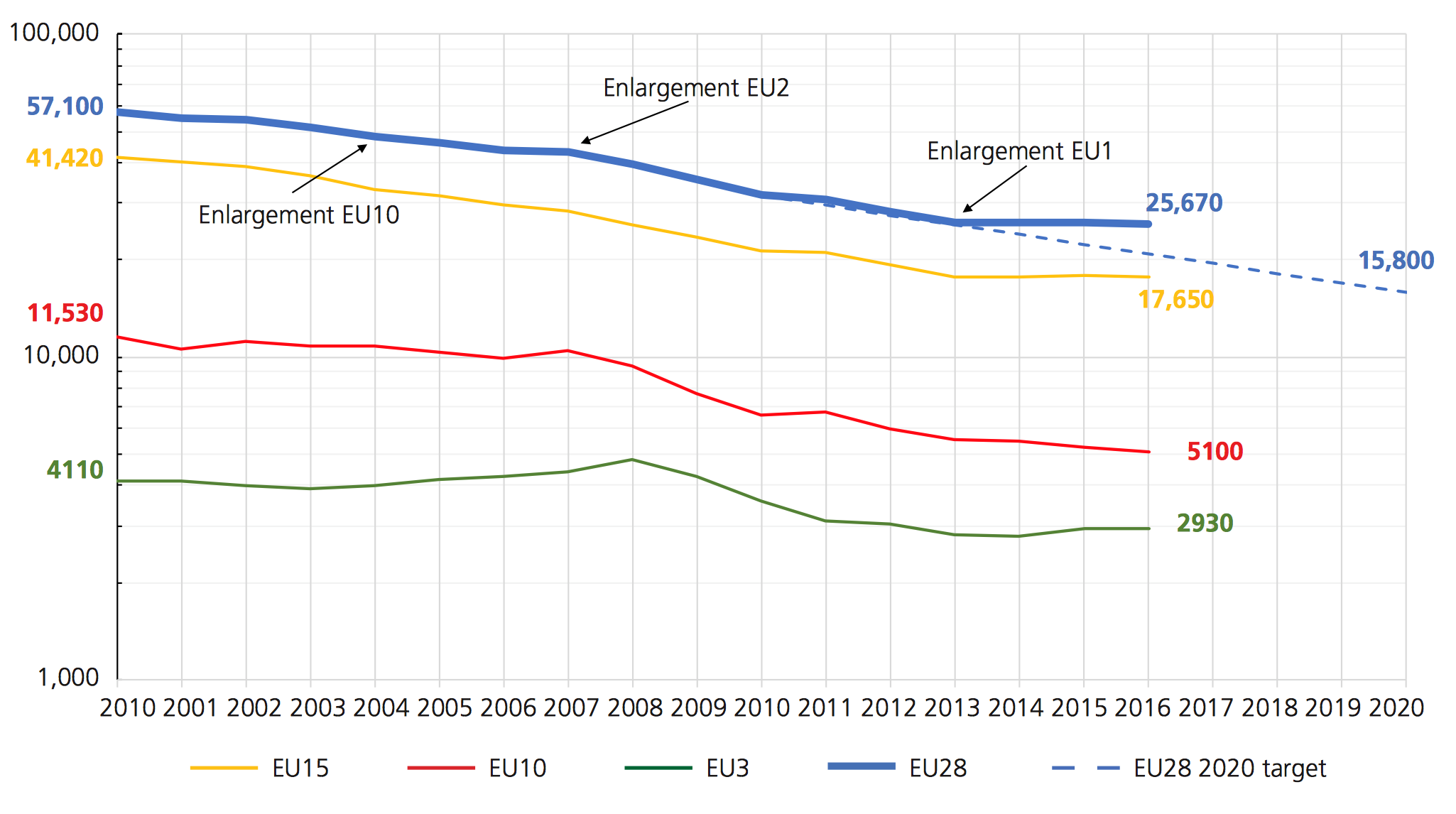
Road Safety Manual
A manual for practitioners and decision makers
on implementing safe system infrastructure!

Road Safety Manual
A manual for practitioners and decision makers
on implementing safe system infrastructure!
Progressive shifts in road safety thinking and practice have taken place since the middle of the last century. As outlined briefly in Scope of the Road Safety Problem, an increasingly ambitious approach has been identified, which has culminated in the Safe System goal of eliminating road crash deaths and serious injuries (Peden et al., 2004; OECD, 2008; GRSF, 2009).
In the 1950s and 1960s, rapid motorisation took place in many OECD countries, accompanied by increasing numbers of road deaths and serious injuries. At that time, the emphasis in policy-making was on the driver. Legislative rules and penalties were established, supported by information and publicity, and subsequent changes in behaviour were expected. As experience has shown, it was wrongly believed that since human error contributed most to crash causation, educating and training road users to behave better could address the road safety problem effectively.
During the 1970s and 1980s, a systems perspective on interventions was evident. William Haddon, an American epidemiologist, developed a systematic framework for road safety based on a disease model that comprised infrastructure, vehicles and users in pre-crash, in-crash and post-crash stages (Haddon, 1968). Central to this approach was the understanding that the exchange of kinetic energy in a crash leads to injury, which needs to be managed to ensure that the thresholds of human tolerances to injury are not exceeded. This broadened the scope of intervention to highlight the need for system-wide delivery.
By the early 1990s, countries achieving good results had progressed towards implementing action plans with quantitative targets to reduce death and sometimes serious injuries (OECD, 1994, 2008; PIARC, 2012). The reductions achieved in different groupings of EU countries are presented in Figure 2.2.

The 28 European Member States reduced the number of road deaths by 19% between 2010 and 2016, however, a reduction in progress had to be registered in recent years (ETSC, 2017). In many countries, casualty reductions have been achieved through system-wide intervention packages. Typically, four broad categories of interventions were responsible for the majority of safety gains achieved. These are:
By the late 1990s, two of the world’s best performing countries had determined that maintaining continuous improvement in performance would require a more ambitious, comprehensive and sustainable approach than had been adopted in previous practice. The Dutch Sustainable Safety and Swedish Vision Zero strategies aimed to make the road system intrinsically safe (Koornstra et al., 1992; Tingvall, 1995; Wegman & Elsenaar, 1997).
In both the Sustainable Safety and Vision Zero approaches, new emphasis is given to managing the exchange of kinetic energy in a crash to ensure that the thresholds of human tolerances to injury are not exceeded. Road deaths and serious injuries are no longer seen as a necessary price to be paid for improved mobility (Tingvall & Haworth, 1999).
The Safe System approach goes further than traditional approaches that focused on safer vehicles, safer roads and safer users. This newer approach now also addresses the critical interfaces between them. The ‘engineered’ elements of the system, i.e. vehicles and roads, can be designed to be compatible with the human element, recognising that while crashes might occur, the total system can be designed to minimise harm (Tingvall, 1995; Ydenius, 2010). This shared responsibility for better design is a key element of the Safe System approach.
In a sustainably safe road traffic system, infrastructure design inherently and drastically reduces crash risk. Should a crash occur, the process that determines crash severity is conditioned in such a way that severe injury is almost excluded.
Towards sustainably safe road traffic, Koornstra et al., (1992).
The Safe System approach:
Source: Bliss and Breen, 2012; OECD, (2008).
In-depth discussion of the Safe System approach, its scientific basis and scope is set out in Safe System Approach. An introduction to steps to implementing Safe System projects in low-income countries are set out in Institutional Management Functions in Management System Framework and Tools and discussed more fully in Safe System Approach and Targets and Strategic Plans.